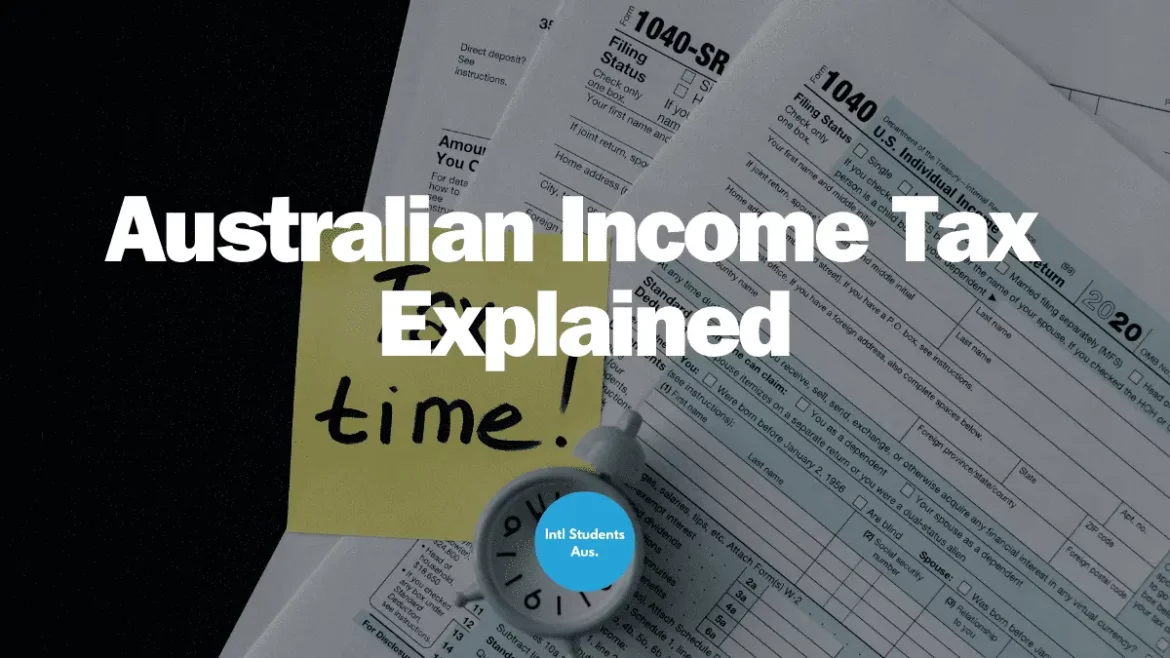Navigating the Australian tax system can be complex, especially for international students. As the financial year runs from 1 July to 30 June, it’s crucial to grasp the income tax brackets and rates applicable to residents for the current (2023-24) and previous (2022-23) financial years.
Am I considered an Australian resident for tax purposes?
Yes. If you are studying in Australia for six months or more- you are typically regarded as an Australian resident for tax purposes.
If you’re considered an Australian resident for tax purposes, be prepared to declare all your worldwide income, regardless of its source. This includes income from employment, investments, business activities, and anything else you might earn. Additionally, you’ll be responsible for paying income tax on your taxable income, with rates increasing progressively as your earnings rise. Finally, don’t forget to lodge your annual tax return by the deadline, which typically falls on October 31st each year.
Specific Concerns for International Students
International students face unique financial and tax considerations while pursuing their education in Australia. Below, we delve into specific concerns that demand your attention.
Income from Employment
As an international student in Australia, understanding the nuances of income taxation is crucial. You are permitted to work up to 40 hours per fortnight during your course sessions and unlimited hours during breaks. It’s essential to know that all income earned within Australia, irrespective of your residency status, is subject to Australian income tax. Familiarizing yourself with the tax brackets and rates ensures a smooth financial journey during your stay.
Income from Foreign Sources
While studying in Australia, you may have income from foreign sources. It’s important to note that, as an Australian resident for tax purposes, you are required to declare all your worldwide income on your tax return. Whether you earned money overseas through investments, freelance work, or other means, reporting this income accurately ensures compliance with Australian tax regulations.
Tax File Number (TFN)
To pay taxes, you need to have a personal reference number, so that all your payments and superannuation contributions can be linked to you and this one number. This reference number is known as a Tax File Number or a TFN. TFN or (Tax File Number) is a 9-digit number that identifies you as an employee and a taxpayer in Australia. Anyone who wants to work in Australia will need to have a TFN. Learn more about the TFN through this guide. Apply for a TFN using this link.
Tax Offsets and Benefits
International students are eligible for various tax offsets and benefits similar to other Australian residents. However, specific considerations, such as the Low Income Tax Offset (LITO), may be particularly relevant for students. Understanding and optimizing these offsets can contribute to minimizing your tax liability and maximizing your financial resources.
Australian Income Tax Rates for Residents (2023–24 and 2022–23)
Tax rates are progressive for all residents, meaning the more you earn, the higher the percentage of income you’ll pay in tax. For the 2023-24 financial year, these rates are:
| Income Thresholds | Rate | Tax Payable on this Income |
|---|---|---|
| $0 – $18,200 | 0% | Nil |
| $18,201 – $45,000 | 19% | 19c for each $1 over $18,200 |
| $45,001 – $120,000 | 32.5% | $5,092 plus 32.5c for each $1 over $45,000 |
| $120,001 – $180,000 | 37% | $29,467 plus 37c for each $1 over $120,000 |
| $180,001 and over | 45% | $51,667 plus 45c for each $1 over $180,000 |
Understanding how progressive tax is calculated
Here are some specific examples of international student circumstances that will make it easier to understand your tax obligations:
Example 1: John’s Part-Time Job
Let’s consider John, an international student working part-time in a cafe. His annual income is $25,000. Now, let’s calculate his income tax for the 2023–24 financial year.
- John’s taxable income: $25,000 – $18,200 (Tax-free threshold) = $6,800
- Tax on the amount between $18,201 and $45,000 (19%): $6,800 * 19% = $1,292
- John’s total tax payable: $1,292
Explanation: John falls into the second income bracket, and his tax is calculated based on the rate for that bracket. Since his income is within this range, there is no tax on the first $18,200, and only the amount above that is taxed at 19%.
Example 2: Maria’s Full-Time Job
Now, let’s consider Maria, another international student with a full-time job earning $80,000 annually working as an Accountant. We’ll calculate her income tax for the same financial year.
- Maria’s taxable income: $80,000 – $18,200 (Tax-free threshold) = $61,800
- Tax on the amount between $18,201 and $45,000 (19%) = $26799 * 19% = $5091.81
- Tax on the amount between $45,001 and $120,000 (32.5%): $34999 * 32.5% = $11,374.675
- Maria’s total tax payable: $16,466.485
Explanation: Maria falls into the third income bracket. Her tax is calculated based on the rates for the second and third brackets. The first $18,200 is tax-free, between $18,201 and $45,000 is taxed at 19%, and between $45,001 and $120,000 is taxed at 32.5%.
Example 3: Sarah’s Professional Income
Let’s take the example of Sarah, an international student working as a software developer with an annual income of $145,000. We’ll calculate her income tax for the 2023–24 financial year.
- Sarah’s taxable income: $145,000 – $18,200 = $126,800
- Tax on the amount between $45,001 and $120,000 (32.5%): $74,999 * 32.5% = $24,374.675
- Tax on the amount between $120,001 and $180,000 (37%): $126,800 – $120,000 = $6,800 * 37% = $2,516
- Sarah’s total tax payable: $24,374.675 + $2,516 = $26,890.675
Explanation: Sarah falls into the third income bracket. Her tax is calculated based on the rates for the second and third brackets. The first $18,200 is tax-free, the amount between $18,201 and $45,000 is taxed at 19%, the amount between $45,001 and $120,000 is taxed at 32.5%, and the amount between $120,001 and $180,000 is taxed at 37%.


